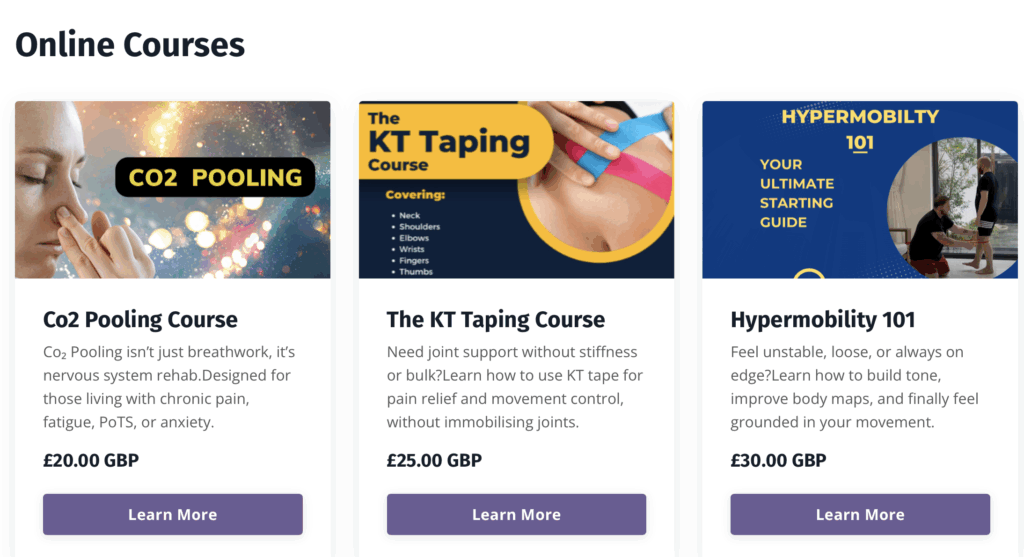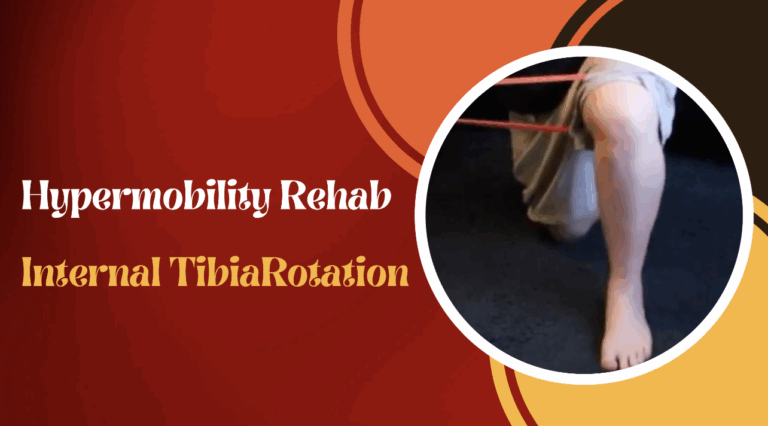- Ehlers-Danlos Syndrome and the Impact of Medical Trauma - 26 May 2024
- Is Hypermobility Linked to Autism? - 25 September 2023
- Alexithymia and Chronic Pain - 11 September 2023
In the whirlwind of today’s ever-evolving world, isn’t it often the case that our emotional well-being takes a back seat amidst the relentless hustle? But here’s something to ponder: our emotional health, often overlooked, is actually a cornerstone of our overall well-being, influencing not just our mental state but our physical health as well. Now, have you heard of “alexithymia“? It’s an emotional trait that’s been making waves in recent discussions. At a cursory glance, alexithymia, with its hallmark difficulty in identifying and expressing emotions, might just seem like another tick on the personality checklist. But, and this might surprise you, recent studies hint at a deeper narrative. This emotional blind spot, it seems, might have deeper ramifications, especially when we talk about its connection to the world of chronic pain.
Chronic pain, which can be best described as a relentless ache persisting for months, sometimes even years, is more than just a physical ailment. It’s a condition that has cast its shadow on countless individuals across the globe. Beyond the evident physical discomfort, it also weaves a web of emotional and mental strain. Now, you might wonder, what’s at the root of this pervasive pain? Researchers, in their pursuit of answers, have ventured down many a path. And here’s where it gets particularly fascinating: one of these paths has revealed an unexpected tie between the emotional intricacies of alexithymia and the tangible agony of chronic pain.
As we journey through this blog post, we aim to dive deep into this captivating connection, unearthing findings from the latest scientific endeavors and illuminating the delicate tango between our emotional state and physical sensations. So, whether you’re a seasoned healthcare professional, someone navigating the challenges of chronic pain, or just an inquisitive soul keen on understanding the mind-body nexus, this exploration is bound to provide some food for thought.
Deciphering Alexithymia
Emotions, in all their rich hues and depths, stand as pillars of the human journey. They’re the compass guiding our choices, molding our interactions, and painting our view of the world. But, have you ever wondered what happens when someone finds themselves at a loss, unable to grasp or express these emotions? Enter the realm of alexithymia.
The term “alexithymia” is a tapestry woven from Greek roots: “a” meaning lack, “lexis” denoting word, and “thymos” signifying emotion. In essence, it translates to a poignant “absence of words for emotions.” This unique personality trait is marked by: • An inherent struggle in pinpointing and articulating one’s emotions. • A somewhat stifled imaginative process, often reflected in a dearth of daydreams or fantasies. • A thought process that’s more attuned to the tangible world outside rather than the tumultuous sea of inner emotions.
Now, you might ask, what’s the genesis of alexithymia? While it remains a hotbed of research and discussion, the consensus leans towards a blend of genetic, neurobiological, and environmental influences. Some scientific endeavors hint at disruptions in the neural highways of emotion processing as potential contributors. Moreover, scars from traumatic events, particularly those etched during one’s impressionable years, might pave the way for emotional detachment, possibly birthing alexithymic tendencies. It’s crucial to grasp that alexithymia isn’t one-dimensional; it’s a complex interplay of both biological and experiential factors.
For those navigating the world with alexithymia, distinguishing between emotions and physical sensations becomes a Herculean task. Imagine feeling a knot in your stomach but being unable to label it as anxiety. This fuzzy boundary between what one feels emotionally and physically can often lead to misreading bodily cues.
Over time, this ambiguity can manifest in myriad ways, from physical complaints to amplified stress reactions. And here’s another twist: the outward-focused cognition of alexithymic individuals might make them hone in on tangible triggers of their emotions, like a taxing event, rather than diving deep into their emotional reservoir. This could result in a diminished capacity to harness emotions as beacons in their personal and social journeys.
But the ripples of alexithymia don’t stop at just emotional discernment.
This trait casts a wider net, linking to a gamut of psychological and physiological challenges, spanning from the shadows of depression and anxiety to physical ailments like gastrointestinal issues. And if recent studies are anything to go by, even the realm of chronic pain isn’t untouched. The challenge of effectively processing and modulating emotions can snowball into internalized stress, which might just be the domino that triggers a cascade of physical health concerns.
Chronic Pain’s Dance with Alexithymia
The human body, in all its intricate glory, stands as a testament to the delicate ballet of physical and emotional systems. Chronic pain, with its unyielding grip and often elusive nature, has always been a magnet for the curious minds of medical mavens and research enthusiasts. While the usual suspects like injuries, inflammation, and nerve issues are acknowledged culprits, there’s a new player on the block: the emotional tapestry of an individual. And at the heart of this tapestry? Alexithymia.
In a monumental systematic review and meta-analysis, the scholarly world took a deep dive into the nexus between alexithymia and chronic pain. Sifting through 77 studies and over 8,000 pain-afflicted souls, the revelations were nothing short of enlightening. Those grappling with chronic pain consistently showcased elevated alexithymia scores when juxtaposed with their pain-free counterparts.
This paints a picture where the challenges of recognizing and voicing emotions, a signature of alexithymia, are more rampant among the pain-stricken.
The study further unveiled a positive tie between alexithymia and a slew of pain-centric factors, from pain intensity to depression. But here’s a curveball: when the shadows of depression and anxiety were factored in, the direct tether between alexithymia and pain intensity became somewhat muted. Doesn’t this make you wonder about the intricate dance of emotional clarity, negative emotions, and the sensation of pain?
Now, let’s shift our lens to Hisayama, a quaint town in Japan. Another pioneering study here sought to decode the relationship between alexithymia and chronic pain among its residents. The findings? Individuals with intensified alexithymia were at a heightened risk of enduring chronic pain. And as alexithymia surged, so did pain severity, disability, and a cocktail of negative emotions, while contentment in life plummeted. This research not only cemented the bond between emotional hurdles and chronic pain but also spotlighted the ripple effects on holistic well-being.
The verdict is in: alexithymia, with its emotional intricacies, is a formidable player in the chronic pain arena. While the nitty-gritty mechanisms are still under the microscope, one thing is crystal clear: when addressing chronic pain, our emotional health cannot be sidelined. As we journey deeper into the enigma of the human psyche and physique, the alexithymia-chronic pain connection stands as a stark reminder of the fragile equilibrium between our emotional and physical beings.
The Role of Emotional Acuity
Emotional acuity, the innate knack to discern, grasp, and react to not only our own emotional tides but also those of others, stands as a cornerstone of our holistic well-being. It’s the bedrock upon which the edifice of emotional intelligence is erected, casting its influence over a myriad of facets in our lives, from the bonds we forge to the ways we navigate life’s challenges.
At the heart of it, emotional acuity gifts us the lens to perceive emotions as beacons. Take, for instance, the flutter of anxiety; doesn’t it often hint at a looming hurdle? On the flip side, a surge of contentment might just be a sign that we’re in sync with our core values. Tuning into these emotional signals paves the way for a more attuned navigation of our surroundings, steering our choices towards paths that resonate with our well-being.
Now, when we delve into the realm of chronic pain, the significance of emotional acuity takes center stage. As the research narratives unfold, it’s evident that those with alexithymia often find themselves in a maze, unable to distinguish emotional upheavals from tangible pain.
Amplifying this emotional clarity can be the compass that pinpoints the true epicenter of discomfort, be it an emotional storm or bona fide physical agony. This clarity, in turn, can be the guiding star for more tailored interventions and coping blueprints.
Considering the intertwined tales of alexithymia and chronic pain, therapeutic avenues that champion the enhancement of emotional intelligence emerge as potential game-changers.
Modalities like meditation, emotion-centric therapy, and cognitive-behavioural approaches can arm individuals with the arsenal to delve deeper into their emotional landscapes, possibly reshaping their pain narrative.
There’s a clear connection between our emotional health and our physical well-being. As we delve deeper into alexithymia, it’s evident that our capacity to identify and express emotions has a significant impact on how we experience chronic pain. While we’re still piecing together the exact mechanisms, the existing evidence highlights the need for a comprehensive approach to health.
It’s essential to address our emotional well-being, be aware of cultural differences, and understand the wider psychological context when aiming to manage and potentially reduce chronic pain. As we continue to explore the complexities of the human body and mind, one truth stands firm: our emotions and physical sensations are closely connected, each shaping and influencing the other.
Enjoyed Our Blog? Why Stop Here?
If you’ve found value in our posts, imagine the impact of a structured, science-backed course tailored specifically for fibromyalgia and its unique challenges. The Full Body Fibro Course is your ultimate starting point for understanding your body, improving mobility, and managing symptoms effectively.





